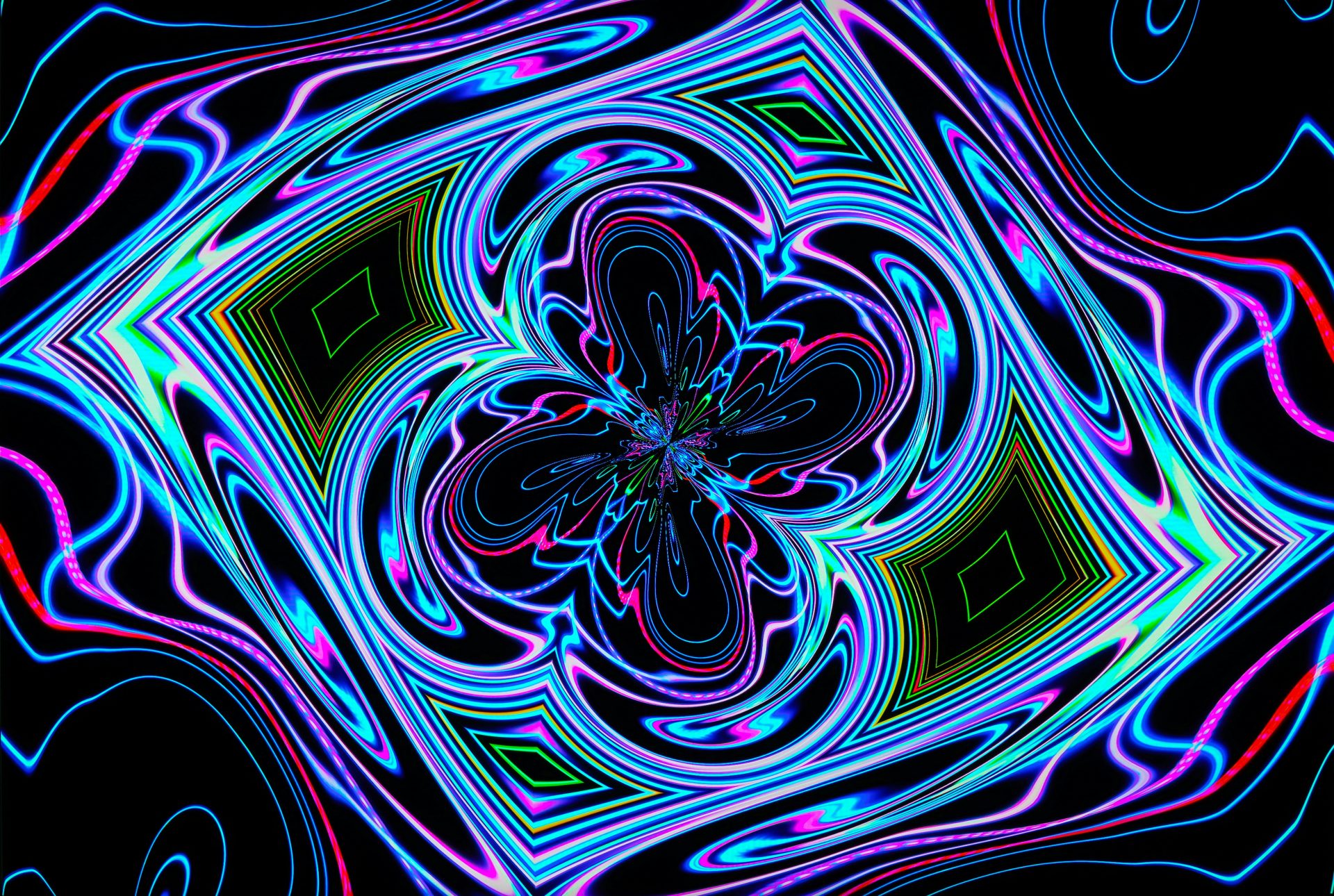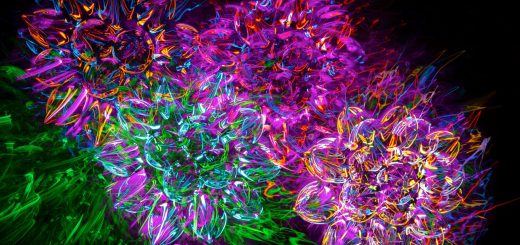Yantra Types: Exploring Sacred Designs

Hey there, amazing readers! 🖐️ Just a quick note: yes, we know there are a lot of ads here. Trust us, we get it—it’s not the prettiest look, but they help us keep this blog alive and kicking. Those pesky little ads cover the costs of all the behind-the-scenes magic, from hosting and tech stuff to creating content we hope you’ll love.
We’re committed to delivering quality posts, and your support (even just sticking around despite the ads) means everything to us. So, bear with us, and thanks for helping us keep the good vibes rolling. Now, on to the fun stuff! 😉
TRANSLATE BUTTON AT THE END OF THE ARTICLE
A Quick Overview
Yantras are sacred geometric designs that have been used for centuries in Hindu and Buddhist traditions for meditation, healing, protection, and spiritual growth.
These intricate and symmetrical symbols are believed to hold powerful energies that can help individuals connect with higher consciousness and manifest their desires.
There are various types of yantras, each with its unique purpose and significance.
In this article, we will explore the different types of yantras, their historical origins, and how they are used in various spiritual practices.
Introduction to Yantra Types
Yantras are intricate geometric designs that are used as tools for meditation, concentration, and manifestation.
These sacred symbols are believed to represent the unity of the cosmos and the individual soul.
The word "yantra" is derived from the Sanskrit word "yam," which means to control or restrain, and "tra," which means instrument or tool.
Yantras are considered powerful tools for harnessing cosmic energy and achieving spiritual enlightenment.
There are various types of yantras, each with its specific purpose and symbolism.
Some yantras are designed to attract wealth and prosperity, while others are used for protection against negative energies.
Yantras can also be used for healing physical ailments, balancing emotions, and cultivating inner peace.
These sacred designs are believed to have a profound impact on the subconscious mind and can help individuals align with their higher selves.
Understanding Sacred Geometry
Sacred geometry is the study of geometric patterns and shapes that are believed to hold spiritual significance.
These geometric forms are found in nature, architecture, art, and religious symbols.
Sacred geometry is based on the belief that certain shapes and symbols have inherent meanings and energies that can influence the physical, emotional, and spiritual realms.
Yantras are a perfect example of sacred geometry, as they are composed of geometric shapes such as triangles, circles, squares, and lotus petals.
The intricate patterns and symmetrical designs of yantras are thought to create a resonance with the cosmic energies of the universe.
By meditating on a yantra, individuals can tap into these powerful vibrations and align themselves with the divine energy that permeates all of creation.
Sacred geometry is also used in various spiritual traditions to create mandalas, temples, and other sacred spaces that are believed to have transformative and healing properties.
Historical Origins of Yantras
The origins of yantras can be traced back to ancient India, where they were used in Vedic rituals and ceremonies.
The earliest known yantras date back to the 8th century BCE and were used in the construction of temples and sacred spaces.
Yantras were also used in meditation practices to help individuals achieve spiritual enlightenment and connect with the divine.
Over time, yantras became an essential part of Hindu and Buddhist traditions, with each symbol carrying its unique meaning and significance.
The intricate designs of yantras were believed to represent the cosmic order and the interconnectedness of all beings.
Yantras were also used as tools for invoking deities, seeking blessings, and protection from negative energies.
Different Types of Yantras
There are various types of yantras, each serving a specific purpose and intention.
Some of the most common types of yantras include:
Shri Yantra: This yantra is considered the most powerful and auspicious yantra, representing the divine feminine energy.
It is used for attracting wealth, prosperity, and abundance.
Ganesha Yantra: This yantra is dedicated to Lord Ganesha, the remover of obstacles.
It is used for overcoming challenges, seeking success, and removing obstacles in one’s path.
Sri Chakra Yantra: This yantra represents the cosmic energy of the universe and is used for spiritual enlightenment, meditation, and aligning with higher consciousness.
Kuber Yantra: This yantra is associated with Lord Kuber, the god of wealth.
It is used for attracting material wealth, prosperity, and success in business.
Baglamukhi Yantra: This yantra is dedicated to Goddess Baglamukhi, who is believed to protect individuals from enemies, negative energies, and psychic attacks.
Yantras for Prosperity and Wealth
Yantras are often used for attracting prosperity, abundance, and wealth.
The Shri Yantra is one of the most popular yantras used for manifesting wealth and success.
By meditating on the Shri Yantra, individuals can align themselves with the energy of abundance and attract financial prosperity into their lives.
Other yantras, such as the Kuber Yantra and Lakshmi Yantra, are also used for attracting material wealth and financial stability.
Yantras for prosperity and wealth are believed to create a positive energy field that attracts abundance and success.
By focusing on these sacred symbols during meditation, individuals can shift their mindset towards abundance and prosperity.
Yantras for wealth are often placed in homes, offices, and businesses to enhance prosperity and success in all aspects of life.
Yantras for Protection and Healing
Yantras are also used for protection against negative energies, psychic attacks, and malevolent forces.
The Baglamukhi Yantra is one such yantra that is believed to protect individuals from enemies, curses, and negative influences.
By meditating on the Baglamukhi Yantra, individuals can create a shield of protection around themselves and ward off negative energies.
Yantras for healing are designed to balance the physical, emotional, and spiritual energies of individuals.
The Chakra Yantra, for example, is used for aligning the chakras and promoting overall well-being.
By meditating on the Chakra Yantra, individuals can release blockages, cleanse their energy field, and promote healing on all levels.
How Yantras are Used in Meditation
Yantras are powerful tools for meditation and concentration.
By gazing at the geometric patterns and symmetrical designs of a yantra, individuals can quiet the mind, focus their attention, and enter a deep state of meditation.
Yantras are often used in conjunction with mantras, breathing techniques, and visualization exercises to deepen the meditative experience.
During meditation, individuals can focus on the center of the yantra and allow themselves to become absorbed in its intricate patterns.
As the mind becomes still and the senses are withdrawn, individuals can tap into the subtle energies of the yantra and experience a deep sense of peace and tranquility.
Meditating on a yantra can help individuals access higher states of consciousness, expand their awareness, and connect with their inner divine nature.
Yantra Symbols in Hinduism
Yantras play a significant role in Hinduism, where they are used in worship, rituals, and spiritual practices.
Each yantra is associated with a specific deity, mantra, and intention.
Yantras are considered sacred symbols that represent the divine energy of the universe and the interconnectedness of all beings.
Yantras are often used in temples, shrines, and altars to invoke blessings, seek protection, and connect with the divine.
In Hinduism, yantras are believed to be powerful tools for manifesting desires, seeking guidance, and cultivating spiritual growth.
The sacred geometry of yantras is thought to resonate with the cosmic energies of the universe and create a harmonious balance between the individual and the divine.
Yantras are also used in puja ceremonies, yagnas, and other sacred rituals to honor deities, seek blessings, and offer gratitude for divine grace.
Yantras in Buddhist Tradition
Yantras are also used in Buddhist traditions as tools for meditation, visualization, and spiritual contemplation.
In Tibetan Buddhism, yantras are known as "mandalas" and are used to represent the universe and the inner cosmos.
Mandalas are intricate geometric designs that are used in meditation practices to help individuals achieve enlightenment and connect with the divine.
Buddhist yantras are often created using colored sand, grains, or stones, and are meticulously crafted by monks in elaborate rituals.
Mandalas are used as visual aids for meditation, visualization, and concentration.
By focusing on the intricate patterns and symbols of a mandala, individuals can enter a deep state of meditation, expand their awareness, and connect with their inner Buddha nature.
Yantras in Tantric Practices
Yantras play a significant role in Tantric practices, where they are used as tools for invoking deities, channeling energy, and achieving spiritual transformation.
Tantric yantras are often used in rituals, ceremonies, and initiations to awaken kundalini energy, balance the chakras, and achieve union with the divine.
Tantric yantras are designed to represent the cosmic energies of Shiva and Shakti, the masculine and feminine principles of the universe.
Tantric yantras are used in conjunction with mantras, mudras, and visualization techniques to amplify their energetic effects.
By meditating on a tantric yantra, individuals can awaken their inner energy centers, activate dormant potentials, and experience spiritual enlightenment.
Tantric yantras are considered sacred symbols that hold the keys to unlocking the mysteries of the universe and achieving union with the divine.
Creating Personalized Yantras
Individuals can create personalized yantras for specific intentions, desires, and goals.
By meditating on a personalized yantra, individuals can align themselves with their deepest desires and manifest their dreams into reality.
Personalized yantras can be created using sacred geometry, symbols, and colors that resonate with the individual’s intentions and aspirations.
To create a personalized yantra, individuals can start by setting a clear intention or goal that they wish to manifest.
They can then choose symbols, shapes, and colors that symbolize their intention and represent their desired outcome.
By meditating on the personalized yantra regularly, individuals can program their subconscious mind, align with the energies of manifestation, and attract their desired outcome into their lives.
Exploring Yantras in Modern Art
Yantras have also found their way into modern art, where they are used as decorative elements, symbols of spirituality, and tools for self-expression.
Contemporary artists often incorporate yantras into their artwork to convey deeper meanings, evoke spiritual themes, and create a sense of harmony and balance.
Yantras are used in paintings, sculptures, and installations to create a sense of sacredness and transcendence.
Modern artists draw inspiration from traditional yantras, sacred geometry, and spiritual practices to create visually stunning and thought-provoking artworks.
Yantras in modern art serve as reminders of the interconnectedness of all beings, the unity of the cosmos, and the power of intention and manifestation.
By exploring yantras in modern art, individuals can deepen their understanding of sacred geometry, spirituality, and the transformative power of art.
Conclusion
Yantras are powerful tools for meditation, manifestation, healing, and spiritual growth.
These sacred geometric designs have been used for centuries in Hindu and Buddhist traditions to connect with higher consciousness, attract abundance, and protect against negative energies.
By exploring the different types of yantras, their historical origins, and their significance in various spiritual practices, individuals can deepen their understanding of sacred geometry, symbolism, and the transformative power of these sacred symbols.
Whether used for prosperity, protection, healing, or spiritual awakening, yantras continue to play a significant role in the spiritual journey of individuals seeking to align with their higher selves and connect with the divine.

The Enlightenment Journey is a remarkable collection of writings authored by a distinguished group of experts in the fields of spirituality, new age, and esoteric knowledge.
This anthology features a diverse assembly of well-experienced authors who bring their profound insights and credible perspectives to the forefront.
Each contributor possesses a wealth of knowledge and wisdom, making them authorities in their respective domains.
Together, they offer readers a transformative journey into the realms of spiritual growth, self-discovery, and esoteric enlightenment.
The Enlightenment Journey is a testament to the collective expertise of these luminaries, providing readers with a rich tapestry of ideas and information to illuminate their spiritual path.
Our Diverse Expertise 🌟
While our primary focus is on spirituality and esotericism, we are equally passionate about exploring a wide range of other topics and niches 🌍📚. Our experienced team is dedicated to delivering high-quality, informative content across various subjects ✨.
To ensure we provide the most accurate and valuable insights, we collaborate with trusted experts in their respective domains 🧑🏫👩🏫. This allows us to offer well-rounded perspectives and knowledge to our readers.
Our blog originally focused on spirituality and metaphysics, but we’ve since expanded to cover a wide range of niches. Don’t worry—we continue to publish a lot of articles on spirituality! Frequently visit our blog to explore our diverse content and stay tuned for more insightful reads.






